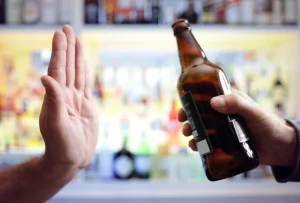
During sentencing, the court will typically order that the driver’s license be revoked for a few months to a few years. The length of a revocation typically depends on the number of consequences of driving drunk include: prior convictions and whether the offense involves certain aggravating factors. However, the court often has the discretion to issue a restricted hardship license to the driver.
- Vision impairment affects the ability to judge distances between vehicles on the road.
- Depending on their blood alcohol concentration and the seriousness of other factors, the inebriated motorist may either be arrested or allowed to have a sober adult come pick them up.
- When an individual chooses to operate a vehicle after consuming alcohol, they not only endanger their own life but also the lives of countless others sharing the road.
- Drivers and victims who are killed or seriously injured will be forever impacted.
- Of those motorcycle riders, 1,705 (29%) were drunk (BAC of .08 g/dL or higher).
Impaired driving behavior
Repeat offenders are also more likely to face mandatory jail sentences, which can be substantial depending on the specific laws of the state and the circumstances of the case. In some jurisdictions, a third or subsequent DUI offense may even be charged as a felony, carrying a potential prison sentence of several years. The financial burden also intensifies, as fines for repeat offenders are typically much higher than those for first-time offenders. In certain cases, the offender’s vehicle may be impounded or even forfeited to the state. Of course, these expenses don’t include the potential in property damage, possible job loss, stress on relationships, injury, and loss of freedom. And that’s if no one is killed or seriously injured by your drunk driving accident.
National Minimum Drinking Age Act
Over 10,000 people die from drunk driving accidents every year.14 Drunk driving puts everyone on the road in danger. A Driving under the influence (DUI) offense may cause you to lose your license, pay a hefty fine, or end up in jail. If an individual is arrested for a DUI-type offense while their driving privileges have been suspended or restricted, they may be charged with higher-level offenses. The trend in numerous states is also to charge individuals with multiple DUI offenses with felony convictions after they have been arrested many times for DUIs or similar offenses (most often, three times or more). Thus, in many states, after an individual has two (or three) DUI convictions on their record, any subsequent arrests for DUIs are felony convictions. We all know that drunk driving is dangerous, and most people would agree that it’s a good idea to avoid driving drunk.
How Are Crypto Casinos Entering Our Regular Life…

According to Science Daily, even small amounts of alcohol can slow down reaction time enough to make driving dangerous. Alcohol-influenced brains take longer to process situations and respond to them, making it challenging to react fast enough to avoid a collision, such as if an animal suddenly crosses the road or a pedestrian steps into the road. Fatal crash risk was at least 11 times higher for drivers with BACs of 0.08 percent, the legal limit for intoxication in most States, than for drivers with zero BACs. Fatal crash risk was 52 times higher for male drivers ages 16 to 20 with BACs of 0.08 percent, compared with zero-BAC drivers of the same age. In 2002, 39 percent of deaths of motorists in automobiles were alcohol related (7,954 out of 20,416), compared with 42 percent of deaths of motorists in vans or light trucks (5,148/12,182), and 44 percent of motorcycle deaths (1,422/3,244).
What Is The Most Popular Program For Recovering Alcoholics?
- States may also have enhanced penalties in place for those who drive with very high BACs, drive impaired with minors in the vehicle or have multiple convictions.
- A DUI based on BAC level is often called a “per se DUI.” Some states also have per se limits on the concentration of certain drugs and controlled substances in the driver’s system.
- Only 2 percent believed it almost certain that all those things would happen.
- Consistent with the fatality data, males were much more likely to report driving after drinking than females (31 percent vs. 13 percent).
The law takes a firm stance against repeat offenders, recognizing the heightened risk they pose to public safety. With each subsequent conviction, the penalties escalate in severity, serving as a deterrent and a means of protecting innocent lives. The impaired judgment caused by alcohol consumption makes drivers more susceptible to distractions while operating a vehicle. For example, they may be tempted to use their phone or send a text instead of keeping their eyes on the road.
Zero Tolerance Laws
In many states, if you refuse to take a chemical test, your license may be suspended regardless of whether you are convicted. Many states require offenders to install ignition interlock devices at the driver’s own expense. An ignition interlock device is a breath test device connected to a vehicle’s ignition. The vehicle cannot be operated unless the driver blows into the interlock and has a BAC below a pre-set low limit, usually .02 g/dL. NHTSA strongly supports the expansion of ignition interlocks as a proven technology that keeps drunk drivers from getting behind the wheel.

Driving or Operating a Vehicle

In cases of alcohol-related traffic fatalities, however, blood testing must be used to estimate alcohol levels. Over 10,000 people die each year in the U.S. from alcohol-related car crashes. And every two minutes, someone is injured in a car accident involving alcohol. Two of every three people will be impacted by a drunk driving crash at some point in their lifetime. According to the National Highway Traffic Safety Administration (NHTSA), approximately 11,654 Americans were killed in alcohol-impaired driving crashes in 2020; deaths like these were 30% of all total motor vehicle traffic fatalities in the US. This section examines trends in drinking and driving over approximately the past 20 years.
In other words, to get a DUI conviction the prosecutor generally must prove some level of impairment (often established by statute) or that the driver’s BAC was above the legal limit. The consumption of alcohol not only affects reaction time, but also impairs reflexes and hinders motor skills such as coordination of the hands, feet, and eyes. Operating a vehicle https://ecosoberhouse.com/ while under the influence of alcohol poses a threat to you and anyone in your vicinity. Alcohol can impair your judgment, causing you to be unaware of coordination issues such as difficulty standing upright, unsteadiness while standing, or trouble walking. You may also not realize that you are having difficulty inserting the key into the ignition.
